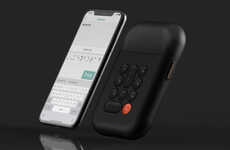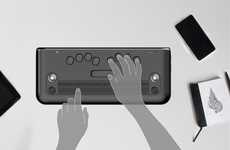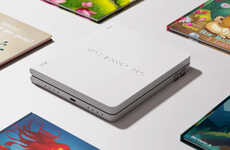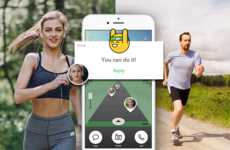
'The Read Read' Teaches Blind People to Read Braille Without an Instructor
Joey Haar — May 26, 2017 — Social Good
References: thereadread & digitaltrends
Teaching literacy is difficult enough on its own, and the challenge is only compounded for people with vision impairments, which makes The Read Read all the more important as a teaching tool. Developed by the Harvard Innovations Lab, it claims to be the only device that allows blind people to "independently learn [Braille] through proven, best-practice, manipulative-based instruction" without the need for any guidance from a teacher.
Though The Read Read is designed with vision impaired children in mind, it is an equally effective tool for adults seeking Braille literacy. It works intuitively: students manipulate tiles that have large-print letters and their Braille translations on them, and touching those letters activates audio feedback. The Read Read is programmed with lessons that build upon one another, letting students learn as slowly or quickly as they desire.
Though The Read Read is designed with vision impaired children in mind, it is an equally effective tool for adults seeking Braille literacy. It works intuitively: students manipulate tiles that have large-print letters and their Braille translations on them, and touching those letters activates audio feedback. The Read Read is programmed with lessons that build upon one another, letting students learn as slowly or quickly as they desire.
Trend Themes
1. Braille Literacy Tools - Opportunities exist for the development and distribution of innovative literacy tools for people with vision impairments.
2. Manipulative-based Learning - Innovative, manipulative-based learning tools have the potential to revolutionize education for people with disabilities.
3. Independent Learning - Independent learning tools, like The Read Read, have the potential to empower people with disabilities to learn at their own pace, without the need for a teacher.
Industry Implications
1. Educational Technology - The educational technology industry has an opportunity to develop and market more effective, manipulative-based, literacy tools for people with disabilities.
2. Assistive Technology - The assistive technology industry can expand by creating new, innovative tools designed to empower people with disabilities to learn and read independently.
3. Special Needs Education - Special needs education programs could increase the effectiveness of their teaching strategies by adopting innovative, manipulative-based, learning tools like The Read Read.
1.5
Score
Popularity
Activity
Freshness























